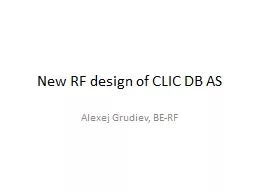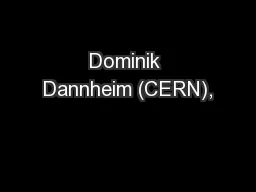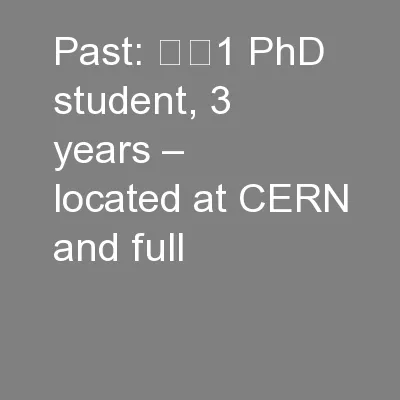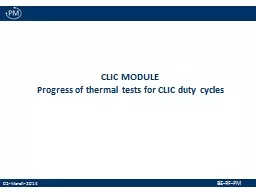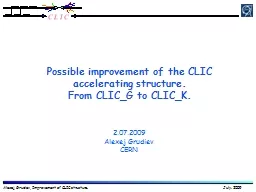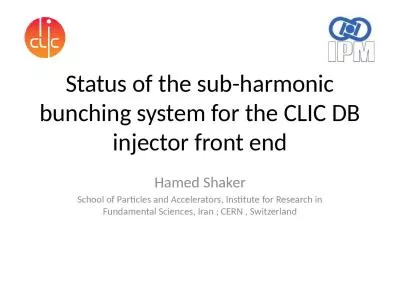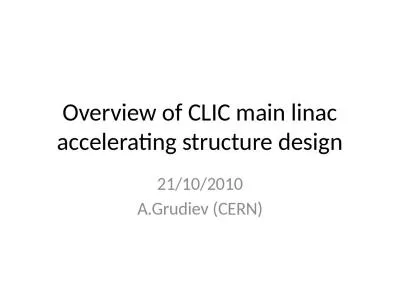PPT-New RF design of CLIC DB AS
Author : calandra-battersby | Published Date : 2016-07-18
Alexej Grudiev BERF Acknoledgements Rolf for useful information about present design R Wegner and E JensenCLICnote945 2012 Present CDR design Present CDR design
Presentation Embed Code
Download Presentation
Download Presentation The PPT/PDF document "New RF design of CLIC DB AS" is the property of its rightful owner. Permission is granted to download and print the materials on this website for personal, non-commercial use only, and to display it on your personal computer provided you do not modify the materials and that you retain all copyright notices contained in the materials. By downloading content from our website, you accept the terms of this agreement.
New RF design of CLIC DB AS: Transcript
Download Rules Of Document
"New RF design of CLIC DB AS"The content belongs to its owner. You may download and print it for personal use, without modification, and keep all copyright notices. By downloading, you agree to these terms.
Related Documents

